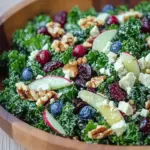The Magic of Caramelizing Onions
The magic of caramelizing onions lies in the slow, steady cooking process that allows their natural sugars to gradually break down and brown, enhancing their flavor and creating a rich, deep sweetness. Onions, when cooked slowly over low heat, release their moisture and transform from their sharp, pungent raw form into a mellow, sweet, and savory ingredient that can be used in both sweet and savory dishes. The caramelization process not only softens the onions but also deepens their natural flavors, creating a complex, savory-sweet taste that is difficult to replicate with any other cooking method.
The process requires time and patience, but it’s a relatively simple technique that can be mastered with just a few basic ingredients: onions, olive oil, sea salt, and a bit of water for deglazing. These humble ingredients work together to bring out the full potential of the onions, creating a condiment or ingredient that can be used in a multitude of ways.
Choosing the Right Onions
While this recipe calls for yellow onions, other types of onions can also be caramelized, such as red onions or sweet onions. Yellow onions are a popular choice because they have a perfect balance of sweetness and sharpness, making them ideal for caramelization. They release a lot of moisture when cooked, allowing them to soften and caramelize beautifully. Sweet onions, like Vidalia onions, can also be used for a milder, sweeter flavor, while red onions will give the caramelized onions a slightly more pungent flavor, which can add an extra dimension to certain dishes. Regardless of the type of onion you use, be sure to slice them uniformly to ensure even cooking.
The Caramelization Process: Patience is Key
Caramelizing onions is a slow process, and patience is the key to achieving that perfect, golden-brown, melt-in-your-mouth texture. When you first start cooking the onions, they will begin to soften and release moisture, but the caramelization process doesn’t happen immediately. It’s important to cook the onions over medium-low heat, stirring them every 5-10 minutes to prevent them from burning. As the onions cook, they will gradually turn golden and eventually reach a deep brown color. This slow process ensures that the sugars in the onions caramelize fully, creating a rich, complex flavor.
While it may take around 30 minutes to achieve a beautiful caramelization, the results are well worth the time. The low and slow approach ensures that the onions are tender, sweet, and full of flavor without being overly charred or bitter. The patience required for caramelizing onions makes the final product even more rewarding, as the caramelized onions become an ingredient that can elevate a wide variety of dishes.
Adding Olive Oil and Sea Salt
Once the onions begin to soften and release their moisture, olive oil and sea salt are added to enhance the flavor and texture. The olive oil helps to coat the onions, creating a silky texture and preventing them from sticking to the pan. Olive oil also contributes its own fruity, savory flavor, which complements the natural sweetness of the onions. The sea salt, on the other hand, helps to draw out moisture and further balance the sweetness of the caramelized onions. Salt is a crucial ingredient in the caramelization process, as it helps to accentuate the depth of flavor and rounds out the savory notes in the dish.
While the amount of salt used can be adjusted to taste, a pinch of sea salt adds just the right amount of seasoning without overwhelming the delicate sweetness of the onions. This balance of olive oil and salt helps to create a smooth, luscious texture that makes caramelized onions so irresistible.
Deglazing for Extra Flavor
Deglazing the pan is a critical step that adds an extra layer of flavor to the caramelized onions. As the onions cook and caramelize, they will leave behind browned bits at the bottom of the pan, which are packed with concentrated flavors. To fully unlock these flavors, a small amount of water is added to the pan to loosen these bits and incorporate them back into the onions. This process adds richness and complexity to the final dish, ensuring that no flavor is left behind. While water is commonly used for deglazing, you can also use broth or wine for an even deeper flavor.
By adding the water and scraping up the browned bits from the bottom of the pan, you create a beautifully flavorful base for the caramelized onions that enhances their savory depth. This step helps to transform the onions into an even more luxurious and flavorful ingredient.
Versatile Uses for Caramelized Onions
Caramelized onions are incredibly versatile and can be used in a wide range of dishes. They make an excellent topping for burgers and sandwiches, adding a rich, sweet-savory flavor that elevates even the simplest of meals. Caramelized onions can also be incorporated into salads, where their sweetness pairs beautifully with greens like arugula, spinach, or mixed greens. They can also be stirred into soups and stews to deepen the flavor profile or used as a filling for savory pies and tarts.
Caramelized onions also pair wonderfully with cheeses, making them an ideal accompaniment to a charcuterie board or as a topping for pizzas. Their rich, complex flavor balances the creaminess of soft cheeses like brie or goat cheese, adding a savory element that complements the cheese’s mildness. Whether used as a topping, ingredient, or garnish, caramelized onions can enhance a wide variety of dishes and take them to the next level.
Storing and Freezing Caramelized Onions
One of the benefits of making caramelized onions is that they can be stored for later use, making them a great option for meal prepping. Once the onions have been caramelized and cooled, they can be stored in an airtight container in the fridge for up to 5 days. This allows you to have ready-made caramelized onions on hand whenever you need them. Whether you’re adding them to a sandwich or stirring them into a pasta dish, having caramelized onions pre-made and stored in the fridge can save you time during busy weeks.
For longer storage, caramelized onions can also be frozen. Simply portion them into freezer-safe bags or containers and store them in the freezer for up to 3 months. To use frozen caramelized onions, simply thaw them in the fridge overnight or heat them up in a pan over low heat. Freezing caramelized onions ensures that you always have this flavorful ingredient available for quick meals and snacks.
Conclusion
In conclusion, caramelizing onions is a simple yet incredibly rewarding process that transforms a basic vegetable into a rich, sweet-savory ingredient that can elevate any dish. With minimal ingredients and a little patience, caramelized onions can be made in just under an hour, offering a versatile and flavorful addition to a wide variety of meals. Whether you use them as a topping, ingredient, or garnish, caramelized onions bring a depth of flavor that is unmatched. They can be easily stored or frozen for future use, making them an excellent option for meal prepping or having a flavorful ingredient ready to go at a moment’s notice. With their golden-brown, velvety texture and rich umami flavor, caramelized onions are a kitchen staple that will enhance any meal with their complex, comforting taste.






